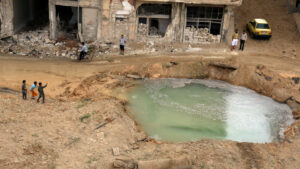In recent years, Iran’s security forces have become notorious for their use of rape as a tool to suppress protests. As protesters take to the streets in increasing numbers, the Iranian government has responded by using rape as a way of jilting the protests and intimidating women from participating in future demonstrations. Though these acts of sexual violence are abhorrent and should not be tolerated, the international community can do more to support women’s rights in Iran by holding the Iranian government accountable for its abuses.
Rape is an act of sexual violence that is perpetrated against another person. Although it is often difficult to prove that an act was motivated by the sexual desire of the aggressor rather than by hatred or revenge, the sexual nature of many acts of sexual violence can help victims identify the culprits and hold the perpetrators accountable. As a form of gender-based violence, rape is widely recognized as a violation of human rights and a significant problem in many parts of the world.
The prevalence of violence against women and the impunity with which the perpetrators are often treated make it necessary to pursue criminal and civil remedies to hold abusers to account and protect the safety and well-being of victims. While the victim often bears the brunt of the consequences of rape—including physical injuries and psychological trauma—her family and loved ones can also be affected. Victims often have difficulty rebuilding their lives after experiencing sexual violence, and their families may also suffer from emotional strain and financial stress as they try to cope with the fallout from the violence.
Sexual violence can take many forms. It is a type of abuse that affects men and women of all ages and backgrounds; those who are particularly vulnerable include victims of human trafficking, people with disabilities, people living with HIV/AIDs
Gender-Based Violence is a global problem that requires a multifaceted approach that includes prevention, education, public awareness campaigns, law enforcement, rehabilitation services, and legal reforms that hold perpetrators accountable for their actions.


